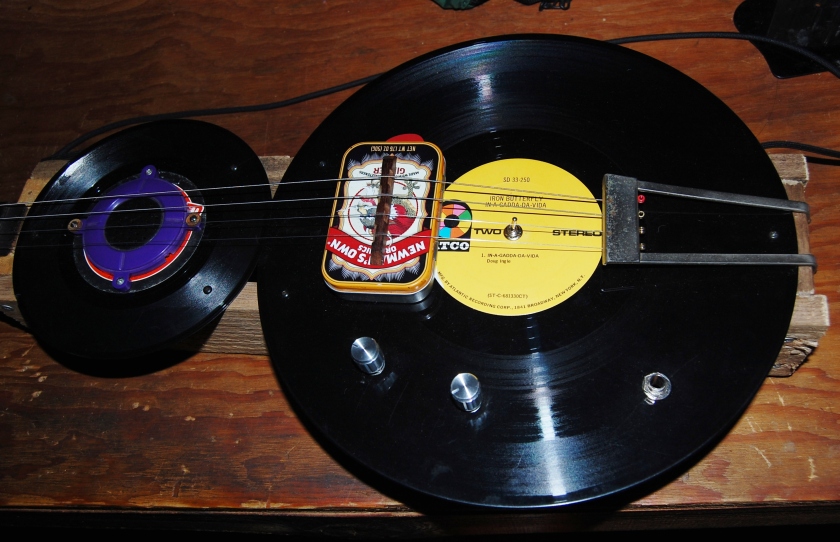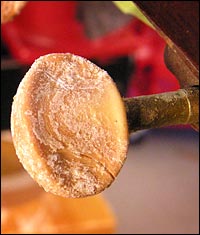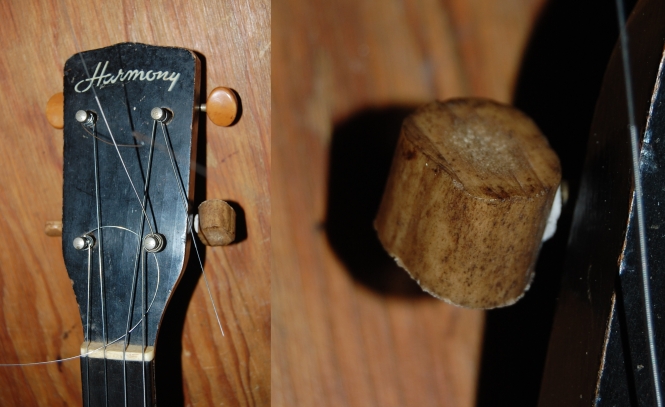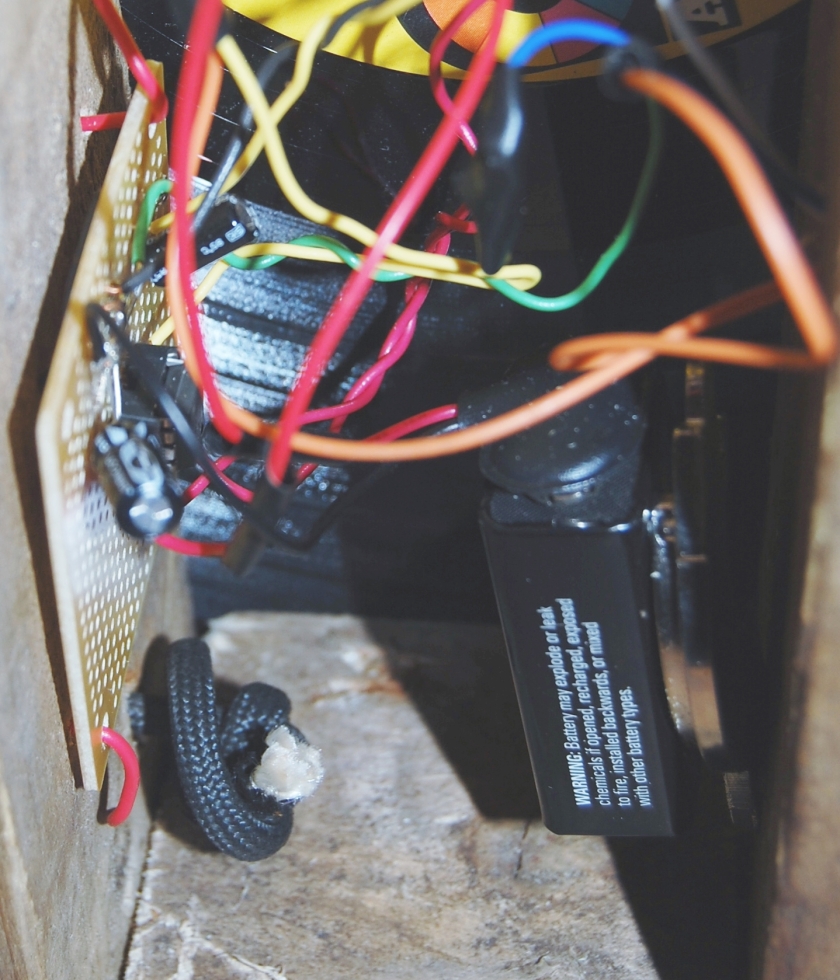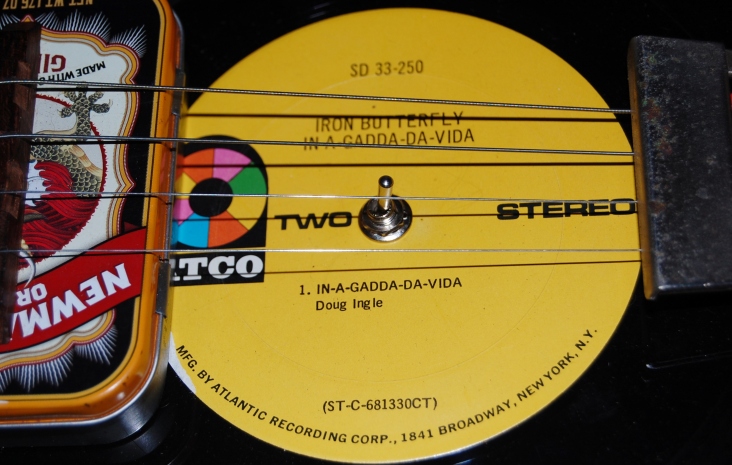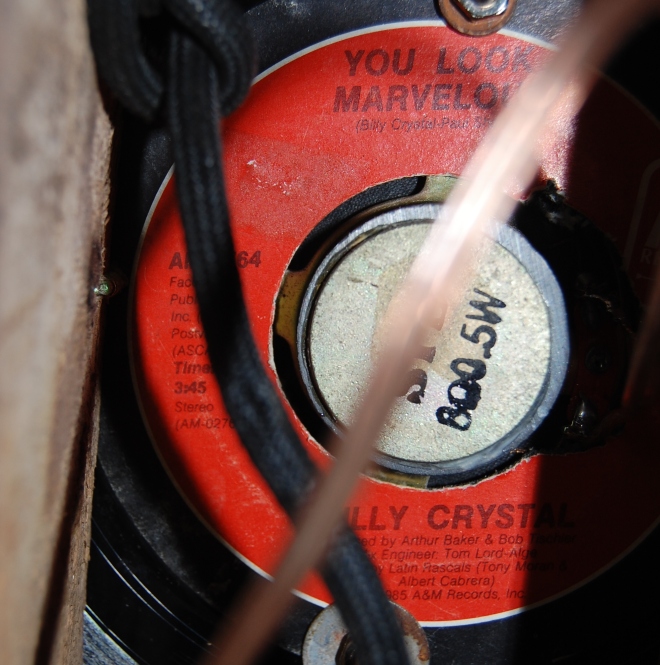People seemed to like the Harp Project last week, so I thought I’d lay a couple of my other new homemade instruments on you.
I built this electric bass from a hunk of 2×4 I extracted from a shipping pallet, and the cast-aluminum housing from a long-dead car-stereo amplifier.
This bass uses vibrating springs, salvaged from expandable curtain rods, instead of strings, and additional sympathetic springs, concealed within the body, increase the instrument’s resonance. More springs attached to the outside of the body increase the instruments sonic potential.
This bass has two piezoelectric pickups, one designed to pick up vibrations from the long springs stretched over the neck of the instrument, and a second that allows the body of the instrument to be played like a drum. A single potentiometer allows the player to balance between the two.
It’s really a very crude device. I had a lot of trouble getting decent sound to video, and I’m just beginning to explore what this instrument can do, but compared to, say a washtub bass, I think this instrument has a lot of musical potential.
I feel strongly about working with salvaged junk. I hate to see the natural world sacrificed to produce disposable consumer crap, but one distinguishing characteristic of our time is this abundance of exotic materials that would have been unbelievably rare, or completely non-existent only 100 years ago.
We live in an age rich in garbage. All of the earth’s natural beauty, and life-sustaining abundance, has been ravaged, transformed, consumed, abandoned, and discarded. There it is, our stolen future, on the curb, in the rain, free for a generation of dumpster-divers.
Here in Humboldt County, this black poly-pipe waterline grows wild in the woods. I find it everywhere, along with chicken-wire, buckets, flower pots, tarps, water tanks, soil bags and worse.
These woods are strewn with the detritus of thirty years of guerrilla growing, including enough abandoned poly-pipe waterline to reach a grow on Mars. Talk about an embarrassment of riches. Prohibition may soon end, but the miles of black poly-pipe in our forests will last forever.
“Let it sing.” I say.
I made the Humboldt Horn out of waterline and a flowerpot.
I cut the mouthpiece off of a cracked and discarded vuvuzela I found while cleaning up a property in Ettersburg. I reinforced it with a bit of electrical tape, and adapted it to fit the horn. 
I can vary the range of the instrument by substituting longer or shorter lengths of waterline. The flowerpot acts as a resonance chamber, and has an omnidirectional microphone mounted inside.
Because the flowerpot is turned upside down and rests on the ground, the instrument is very quiet, but the microphone inside the flowerpot provides a strong signal to drive amplifiers, effects and/or recording equipment. While not particularly attractive, I find the Humboldt horn both expressive and versatile as a musical instrument. Give it a listen.
























